
STAIN REMOVAL GUIDE
Stains and spills can happen anywhere, at any time—even when you’re wearing your favorite clothing. Luckily, there are steps you can take to help remove common stains from your clothes so they can be ready to wear whenever you need them.
STAIN REMOVAL 101: HOW TO HELP GET STAINS OUT OF CLOTHES
To help remove most stains from clothes, you will want to first check your tags for care guidelines, then, if possible with your fabric type, follow these general steps (adjusting based on the type of stain):
Remove any excess by scraping with a dull knife and then blotting the stain with a wet cloth.
Apply enzyme detergent and let sit; or, if the clothing is made from delicate fabric, mix a mild detergent with cold water and squeeze the mixture through the stain.
If attempting to remove either set-in or old stains, pretreat the stain with a detergent or a special pretreating product. Run the article of clothing through your washing machine in the warmest water recommended by the care tag.
If washing white cotton, add oxygen or chlorine bleach to the drum of your washing machine to help with dark stains. Explore more ways to help remove stains from white clothing.
Line or air dry.
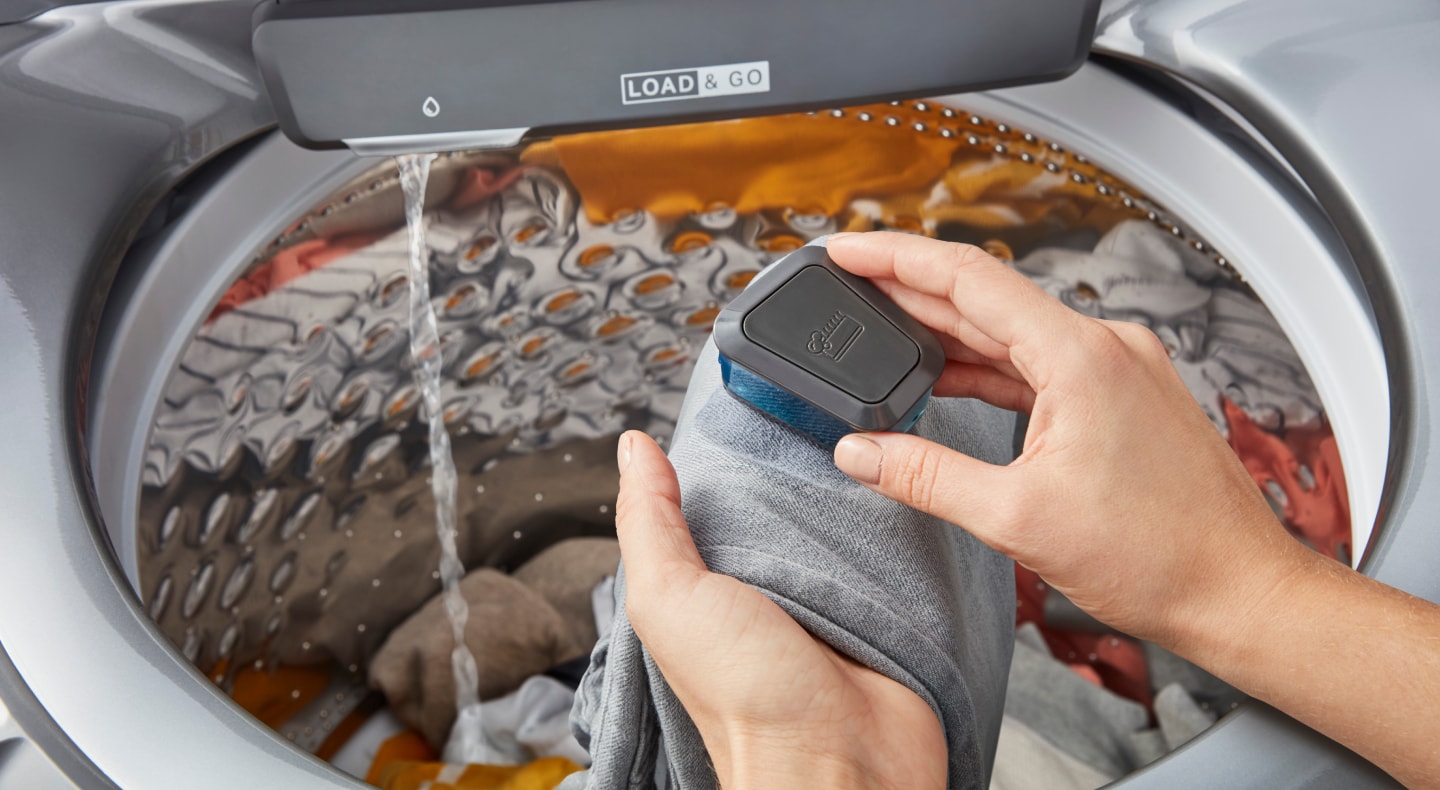
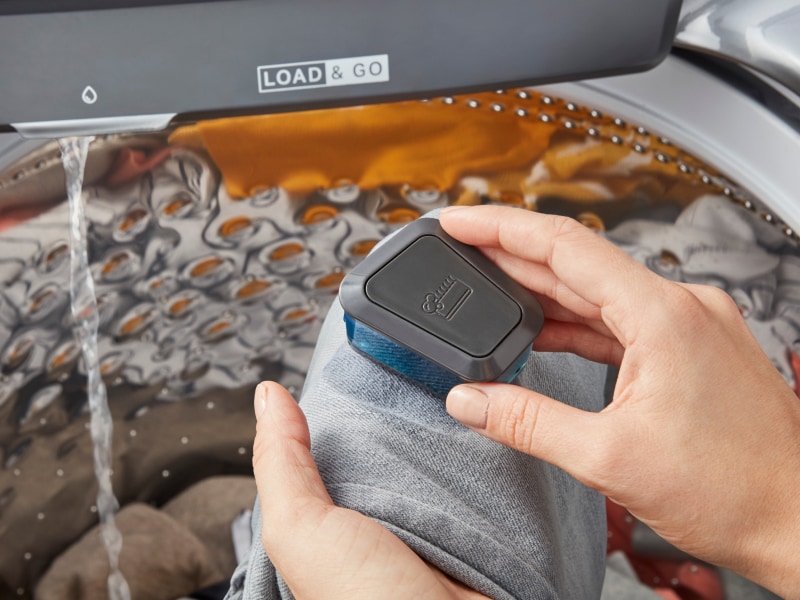
IS PRETREATING STAINS IMPORTANT?
Taking action on stains by pretreating them prior to washing is important for their removal. This is because pretreating stains works to break the stains apart before running them through the washer. Additionally, it is worth noting that the quicker you treat stains, the less time they have to set into your clothing.
WHAT ARE THE BEST HOMEMADE STAIN REMOVERS FOR YOU?
There are several options to utilize if you want to treat stains with a homemade remover. One of those options is white vinegar, which can be a gentle stain remover that doesn’t risk staining the fabric itself—although you should always test in a small area first, if you’re unsure if your fabric can tolerate any stain treatment. If you need to bleach your clothing, try using hydrogen peroxide as opposed to chlorine bleach.
If you use white vinegar as a stain treatment, be sure to rinse your fabric thoroughly to remove the vinegar before placing it in your washing machine.
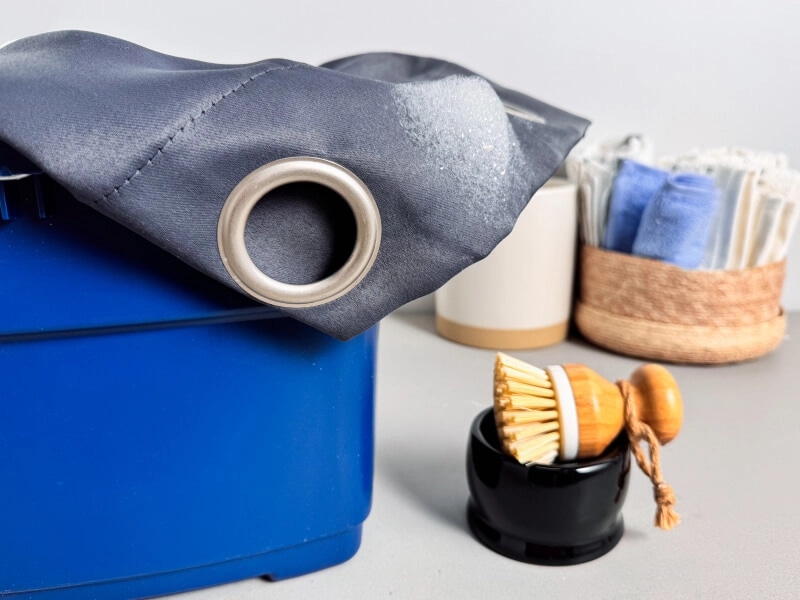
25 TYPES OF STAINS & HOW TO REMOVE THEM
Start by identifying the stain on your clothing, then refer to the corresponding stain section in the guide below. Because every stain is different, there may be additional steps depending on the type of stain as well as the kind of fabric. Always check your care tags first, and test the stain treatment on a small area first, to be sure it’s safe for your fabric.
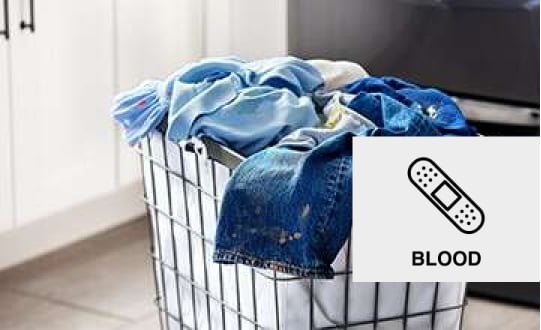
1. BLOOD
If you have a blood stain on your clothing or bed sheets, flush the stain in cold water as soon as you can. Soak the fabric in an enzyme detergent (or gentle detergent, if a delicate fabric) for at least 30 minutes, then apply detergent directly to the stain and finish by running it through your washing machine in cool water.
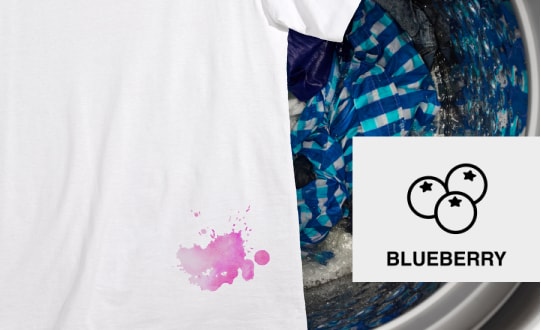
2. BLUEBERRIES
If you find yourself with blueberry stains on your clothing, remove the garment and rinse it from back to front to help flush the stain. Apply an enzyme detergent, then let the fabric sit before running it through the washing machine in the warmest water safe for the clothing. If your fabric is delicate, mix mild detergent in cool water and squeeze the water through it before washing. Finish by line drying.
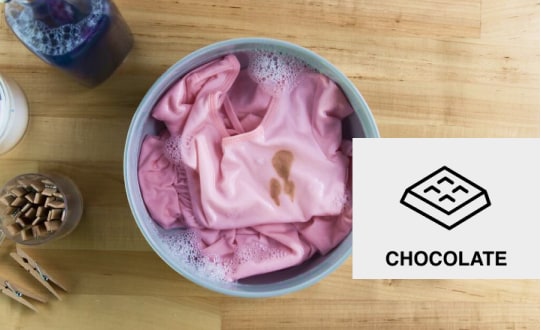
3. CHOCOLATE
Use a spoon or dull knife to remove any excess chocolate before flushing the stain in cold water (from the back of the fabric instead of the front). Soak the clothing in cold water and enzyme detergent (if washing a delicate fabric, mix a mild detergent with cold water and squeeze the water through the clothing). Finish by applying detergent and running the garment through your washing machine in the warmest water safe for the fabric. Learn more about how to get chocolate stains out of clothes.
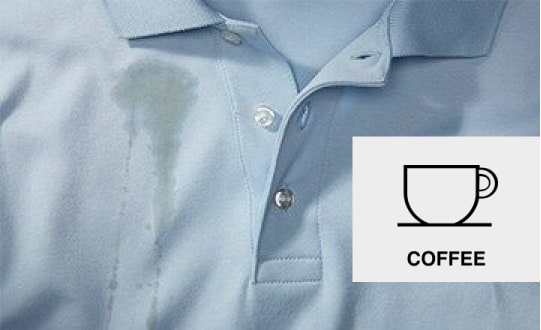
4. COFFEE
To remove coffee stains from clothes, start by rinsing the garment in cold water and applying enzyme detergent. Wash in the warmest water safe for the fabric, and repeat this process if the stain remains. When treating a delicate fabric, start by mixing a mild detergent into cold water instead and squeeze the water through the fabric before washing in your washing machine.
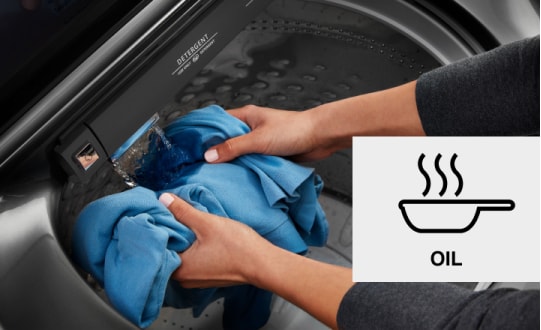
5. COOKING OIL
When removing cooking oil stains from clothes, begin by removing any excess oil by blotting the stain with a paper towel. Apply a stain pretreatment or liquid enzyme detergent directly on the stain. Gently work it into the fibers, and let it sit for 10 minutes. Then wash it in your washing machine in the warmest water recommended by the care tag.
Learn more about how to remove oil-based paint stains from clothes.
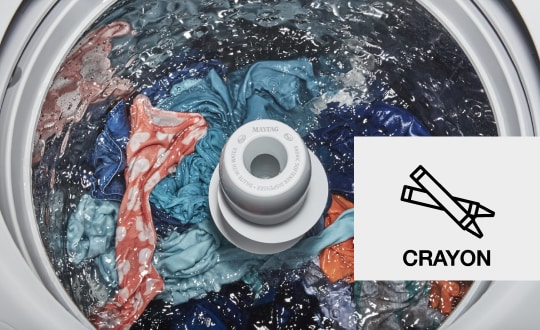
6. CRAYON
If you have kids that get messy during craft time, there are a few easy steps that can help remove crayon stains from clothes. First, apply liquid dish soap to the stain and scrub with a clean toothbrush. Let that sit for a few minutes, then rub the fabric together under warm running water to remove the excess suds from the dish soap. Machine wash on the Heavy Soil setting and line dry.
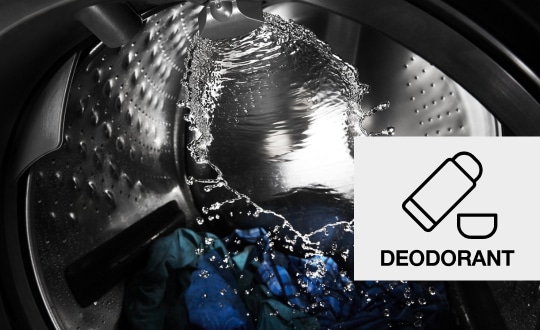
7. DEODORANT
You can help remove deodorant stains from your clothes with a solution of equal parts baking soda, hydrogen peroxide and tap water. Soak the stain in very warm or hot water, then apply the cleaning solution with a toothbrush and work it in thoroughly. Let the mixture sit on the stain for about 20 minutes, then machine wash it on the warmest setting recommended by the fabric’s care label. Line dry and repeat if the stain remains.

8. DETERGENT
To help remove detergent stains from fabric, start by soaking the stained item with the warmest water allowed by the care tag. Then, apply an enzyme or an oxygen-based pretreatment directly onto the stain and gently rub it in using a clean cloth. Let the pretreatment sit for about 10 minutes, then rinse it off thoroughly and machine wash. Let the garment air dry, then repeat if the stain persists.
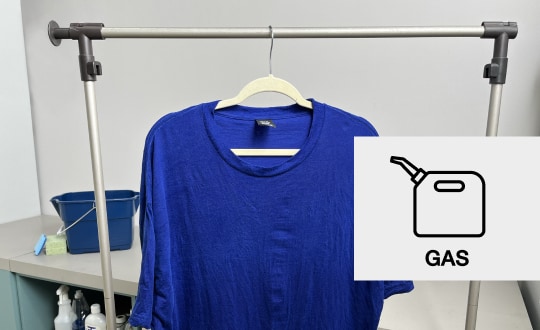
9. GASOLINE
Gas smells and stains can be a nuisance. You can help remove them from your clothes by blotting the stain with a paper towel and applying baking soda over the affected area. Let the baking soda sit for 24 hours, then rinse with water. Cover the area with stain remover and let it soak for 10 minutes before soaking the garment in warm water for at least 30 minutes. Rinse thoroughly, then hand wash and air dry.
Items with flammable substances on them should not be washed in a washer or dried in a dryer. So, be sure to wash out the gasoline stains by hand.
NOTE: Even after removing the stain, moving forward you should continue to avoid washing or drying this garment in a machine. It can be hard to tell if the flammable substance has been completely removed from a garment, so consider any garments that have been exposed to gasoline stains to be hand-wash-only items.
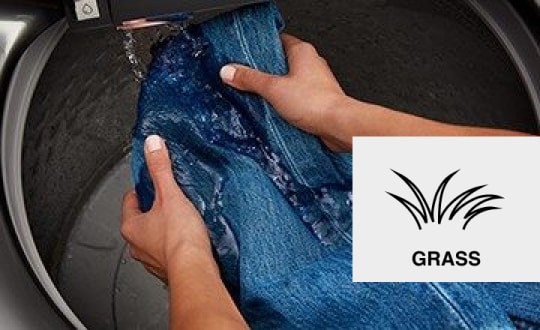
10. GRASS
When washing a grass stain, gently work an enzyme detergent into the fabric, then wash the clothing in hot water. If the clothing is made from a delicate fabric, mix mild detergent and cool water together, then squeeze the water through the fabric. Finish by placing the item in your washing machine and running the load in the warmest water safe for the clothing.
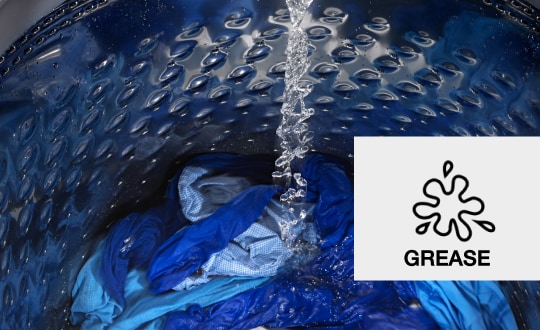
11. GREASE
Removing grease stains from clothing is a very similar process to removing oil stains. Start by removing as much of the excess grease as you can, then gently rub in detergent to pretreat the stain. Let it sit for 10 minutes, and then rinse it in your washing machine in the warmest recommended water, then line dry the items.

12. GUM
A gum stain on your clothes can be a sticky situation. To help get gum out of your fabrics, you can apply laundry detergent to the area with a toothbrush, then gently scrape it off using a butter knife or the edge of a spoon. Use a stain remover for any remaining residue, then wash as normal and air dry.
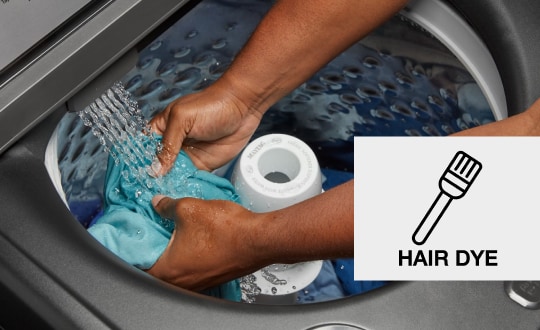
13. HAIR DYE
You can help get hair dye out of your clothes by using a dull knife or a soft toothbrush to scrape excess product off the item, then run the stain under cold water. Apply liquid laundry detergent directly to the stain and work it into the fabric using a toothbrush. Machine wash and air dry.
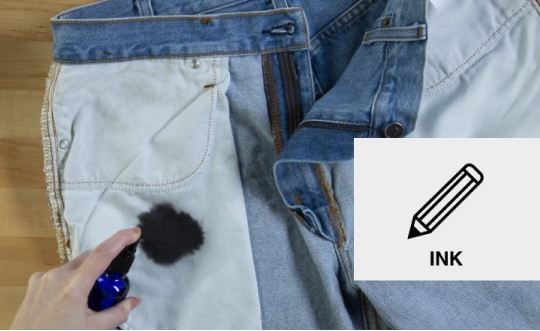
14. INK
Prior to employing this stain removal process for ink stains, test it on a hidden place on the garment before continuing, to make sure your fabric can handle it. Place a paper towel on the stain. From the back side of the fabric, apply rubbing alcohol or hair spray to the stain by dripping it onto the paper towel carefully. Next, use the paper towel to help soak up the stain and the liquid. Repeat until the stain is gone. Finish by applying detergent and running the fabric through your washing machine in the warmest water allowed by your care tag.
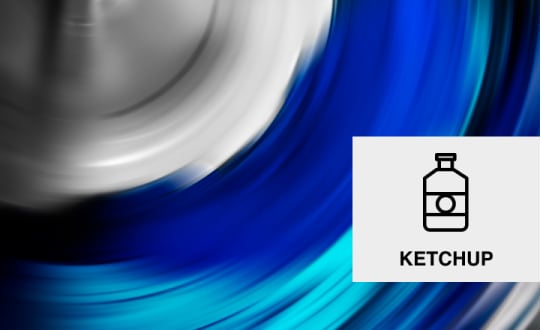
15. KETCHUP
Ketchup stains can look bad, but thankfully they will harden so that you can scrape off any excess ketchup. Avoid dabbing as that could spread the stain. Flush the ketchup stain in cold water (hot water could set the stain) from the backside of the fabric, then apply detergent to pretreat and rinse the stain once the detergent has sat for five minutes.
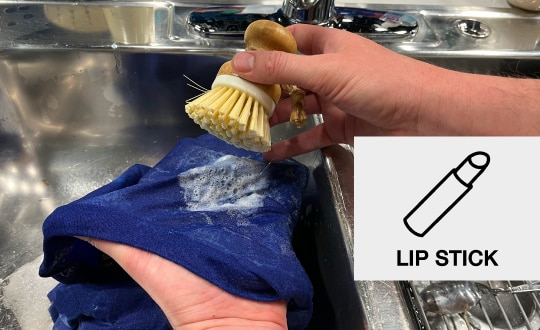
16. LIPSTICK
Before you spot treat a lipstick stain on your clothes, check the garment’s care label for recommended fabric treatment. Then, gently scrape excess lipstick from the fabric using a dull knife or a credit card before applying dish soap directly to the stain. Do not scrub or rub the area, simply let the soap sit for 30 minutes. Soak the garment in a solution of warm water and dish soap for at least an hour, then gently scrub the stain with a soft-bristle brush, working from the outside in. Rinse the fabric thoroughly to remove any excess suds and machine wash as normal. Air dry and repeat as needed.
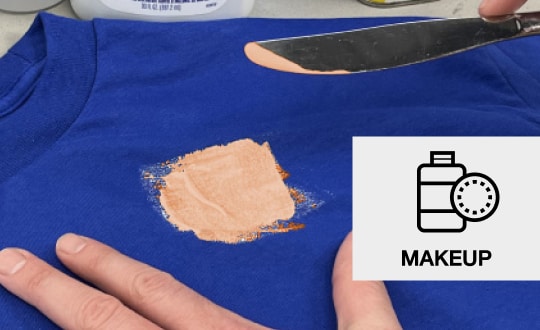
17. MAKEUP
To help remove stains from other makeup products, first use the edge of a spoon or a credit card to carefully scrape excess product off the fabric. For powdered products, you can blow on or gently shake the garment to help remove excess. Apply liquid laundry detergent directly to the stain and fully saturate the area, blotting with a clean cloth or paper towel. Let it sit for about 10 minutes, then machine or hand wash using the warmest water recommended for the fabric. Line dry and repeat if the stain is still visible.
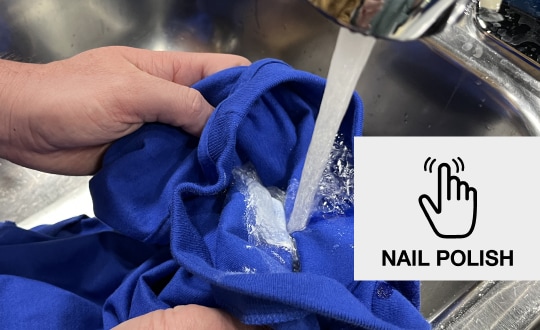
18. NAIL POLISH
DIY manicures and pedicures can be easy on your wallet, but can be messy for your clothes. You can help remove nail polish stains by first removing any excess product from the fabric with a dull knife. Next, place a nonflammable, oil-based soap directly on the stain, gently working it into the fabric with a cotton swab. Rinse with the warmest water allowed for your garment and air dry.
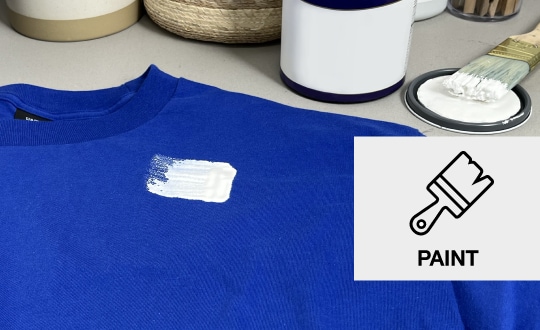
19. PAINT
If you’ve splattered paint on your clothes, you can help treat the stain by scraping any excess paint off with a dull knife and rinsing the area with warm water. Apply a small drop of dish soap directly to the stain and work the soap into a lather. Scrub the area with a clean cloth or sponge, rinse and repeat until the paint and soap are removed from your clothing. Machine wash as normal and line dry.

20. PERMANENT MARKER
Despite its name, permanent marker isn’t necessarily permanent. You may be able to help remove permanent marker stains with a solution of white vinegar and water. Soak the stained garment in the solution, then gently blot the stain with a clean cloth or sponge. Avoid rubbing the area. Rinse the fabric thoroughly to completely remove any remaining vinegar, then wash as normal and air dry.

21. RED WINE
When removing red wine stains, start by rinsing your clothing in cold water then apply an enzyme detergent, allowing it a few minutes to set in. If you are washing a delicate fabric like linen, mix a mild detergent in cool water and squeeze the soapy water through the fabric. Finish by washing the item in your washing machine using the warmest water that is still safe for your clothing.
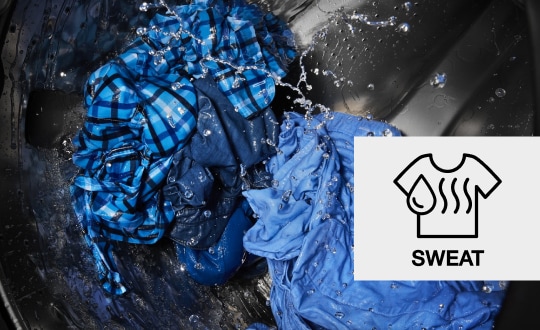
22. SWEAT
Sweat stains can be pesky, but you can help remove them from your clothes by preparing a soaking solution of 2 cups water and 1 cup white vinegar before soaking the garment in it for 30 minutes. Rinse the garment of all vinegar. Wring out any excess water and spot treat the stains with a paste made of ½ cup of baking soda, 1 tablespoon of salt and 1 tablespoon of hydrogen peroxide. Use a toothbrush to scrub the stain with the paste and let it sit for 20 minutes. Machine wash on the warmest possible setting recommended by the care label, then air dry.
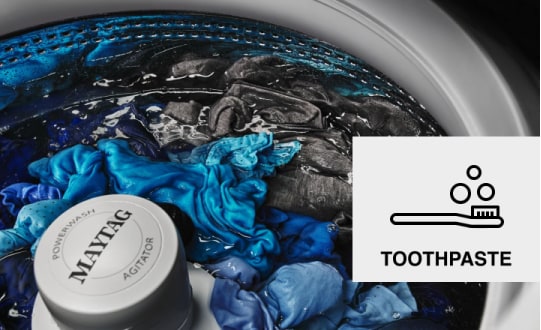
23. TOOTHPASTE
Scrape the toothpaste from your clothing using a butter knife, then use a wet cloth to blot the stain. Soak the stain in cool water, gently rubbing to help with removal. If it does not come out, run it through your washing machine with cool or warm water. Let the item air dry.

24. URINE
Whether you have pets or small children, accidents happen. You can help clean your fabrics of urine stains with a solution of warm water and baking soda. Soak the fabric in the solution for 15 minutes, then rinse thoroughly. Wash according to the instructions on the item’s care tag, air dry and then repeat if the stain lingers.
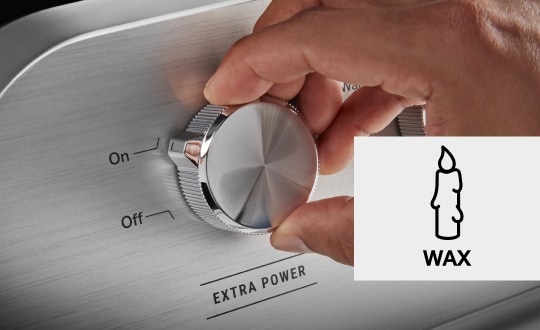
25. WAX
Before you begin stain treatment, make sure to wait for wax to dry completely, as wet wax will smear and spread on your clothes. To help remove wax from fabric, pretreat the area by scraping off any excess wax with a spoon or butter knife. Place the stained area of the item face down on a white paper towel and place another paper towel on top. Iron the area over the paper towel, then apply a stain treatment to any remaining residue. Soak the fabric for at least one hour in the warmest water recommended by the care label, then rinse thoroughly to remove any excess stain treatment. Machine wash on Heavy Soil and air dry.
WHAT STAINS ARE PERMANENT ON CLOTHES?
The short answer is that, if you can identify the source of the stain and treat it immediately, most stains can be removed. However, if you stain delicate fabrics, such as silk, cashmere or wool, these stains can be more difficult to remove.
It is also worth noting that any kind of bleaching or household chemicals, like peroxides or cosmetics, can cause permanent stains.
Shop Maytag® Washers
Features on select Maytag® washing machines like Extra Power, a setting with an intense pre-wash and extra agitation, can help you tackle tough stains. The Deep Fill Option can also increase water levels to help loosen stains and soak away messes.
Was this article helpful? Pass it on
EXPLORE MORE FROM MAYTAG BRAND
-
 How to Read Laundry Symbols: A Complete Guide Never misinterpret a care label again. This washing symbols guide simplifies clothing maintenance, helping protect your wardrobe investments. Free printable guide included.
How to Read Laundry Symbols: A Complete Guide Never misinterpret a care label again. This washing symbols guide simplifies clothing maintenance, helping protect your wardrobe investments. Free printable guide included. -
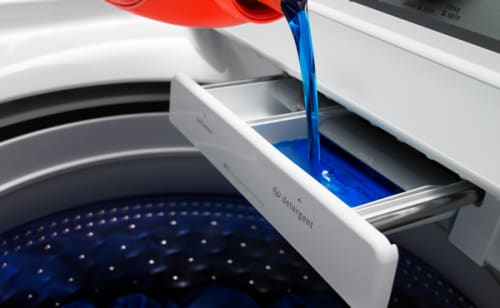 What Is HE Detergent and Why Should I Use It? HE (High Efficiency) detergent is specially designed for front-loading and high-efficiency washing machines. Learn about the benefits of using HE detergent.
What Is HE Detergent and Why Should I Use It? HE (High Efficiency) detergent is specially designed for front-loading and high-efficiency washing machines. Learn about the benefits of using HE detergent. -
 Washing Machine Cycles and Settings Explained Explore washing machine settings and cycles and learn which to use to care for your clothing. From water temperature to cycle time, learn when to use each setting.
Washing Machine Cycles and Settings Explained Explore washing machine settings and cycles and learn which to use to care for your clothing. From water temperature to cycle time, learn when to use each setting.

